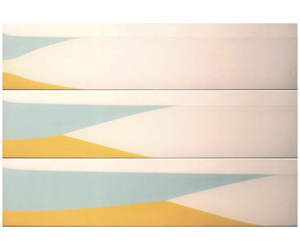JFM Perspectives
Fragmentation versus Cohesion
-
- Published online by Cambridge University Press:
- 25 June 2020, P1
-
- Article
- Export citation
Focus on Fluids
Tenacious wall states in thermal convection in rapidly rotating containers
-
- Published online by Cambridge University Press:
- 24 June 2020, F1
-
- Article
-
- You have access
- HTML
- Export citation
JFM Papers
Reduced-order modelling of thick inertial flows around rotating cylinders
-
- Published online by Cambridge University Press:
- 24 June 2020, A1
-
- Article
-
- You have access
- Open access
- HTML
- Export citation
Reduced-order modelling of radiative transfer effects on Rayleigh–Bénard convection in a cubic cell
-
- Published online by Cambridge University Press:
- 24 June 2020, A2
-
- Article
- Export citation
Connecting the time evolution of the turbulence interface to coherent structures
-
- Published online by Cambridge University Press:
- 24 June 2020, A3
-
- Article
- Export citation
Péclet-number dependence of small-scale anisotropy of passive scalar fluctuations under a uniform mean gradient in isotropic turbulence
-
- Published online by Cambridge University Press:
- 24 June 2020, A4
-
- Article
- Export citation
Structure function tensor equations in inhomogeneous turbulence
-
- Published online by Cambridge University Press:
- 25 June 2020, A5
-
- Article
-
- You have access
- Open access
- HTML
- Export citation
Instability of a thin viscous film flowing under an inclined substrate: steady patterns
-
- Published online by Cambridge University Press:
- 30 June 2020, A6
-
- Article
- Export citation
Mixing in forced stratified turbulence and its dependence on large-scale forcing
-
- Published online by Cambridge University Press:
- 25 June 2020, A7
-
- Article
-
- You have access
- Open access
- HTML
- Export citation
Single-time Markovianized spectral closure in fluid turbulence
-
- Published online by Cambridge University Press:
- 25 June 2020, A8
-
- Article
- Export citation
Reference map technique for incompressible fluid–structure interaction
-
- Published online by Cambridge University Press:
- 30 June 2020, A9
-
- Article
- Export citation
Acoustic propulsion of a small, bottom-heavy sphere
-
- Published online by Cambridge University Press:
- 25 June 2020, A10
-
- Article
- Export citation
Phase separation effects on a partially miscible viscous fingering dynamics
-
- Published online by Cambridge University Press:
- 30 June 2020, A11
-
- Article
-
- You have access
- Open access
- HTML
- Export citation
The formation of grounding zone wedges: theory and experiments
-
- Published online by Cambridge University Press:
- 03 July 2020, A12
-
- Article
-
- You have access
- Open access
- HTML
- Export citation
Shape curvature effects in viscous streaming
-
- Published online by Cambridge University Press:
- 03 July 2020, A13
-
- Article
- Export citation
Bidispersive thermal convection with relatively large macropores
-
- Published online by Cambridge University Press:
- 03 July 2020, A14
-
- Article
-
- You have access
- Open access
- HTML
- Export citation
Impact of ambient stable stratification on gravity currents propagating over a submerged canopy
-
- Published online by Cambridge University Press:
- 06 July 2020, A15
-
- Article
-
- You have access
- Open access
- HTML
- Export citation
Acoustic scattering by cascades with complex boundary conditions: compliance, porosity and impedance
-
- Published online by Cambridge University Press:
- 03 July 2020, A16
-
- Article
-
- You have access
- Open access
- HTML
- Export citation
Analysis of wall-pressure fluctuation sources from direct numerical simulation of turbulent channel flow
-
- Published online by Cambridge University Press:
- 08 July 2020, A17
-
- Article
- Export citation
Noise reduction mechanisms of an open-cell metal-foam trailing edge
-
- Published online by Cambridge University Press:
- 08 July 2020, A18
-
- Article
-
- You have access
- Open access
- HTML
- Export citation






























































